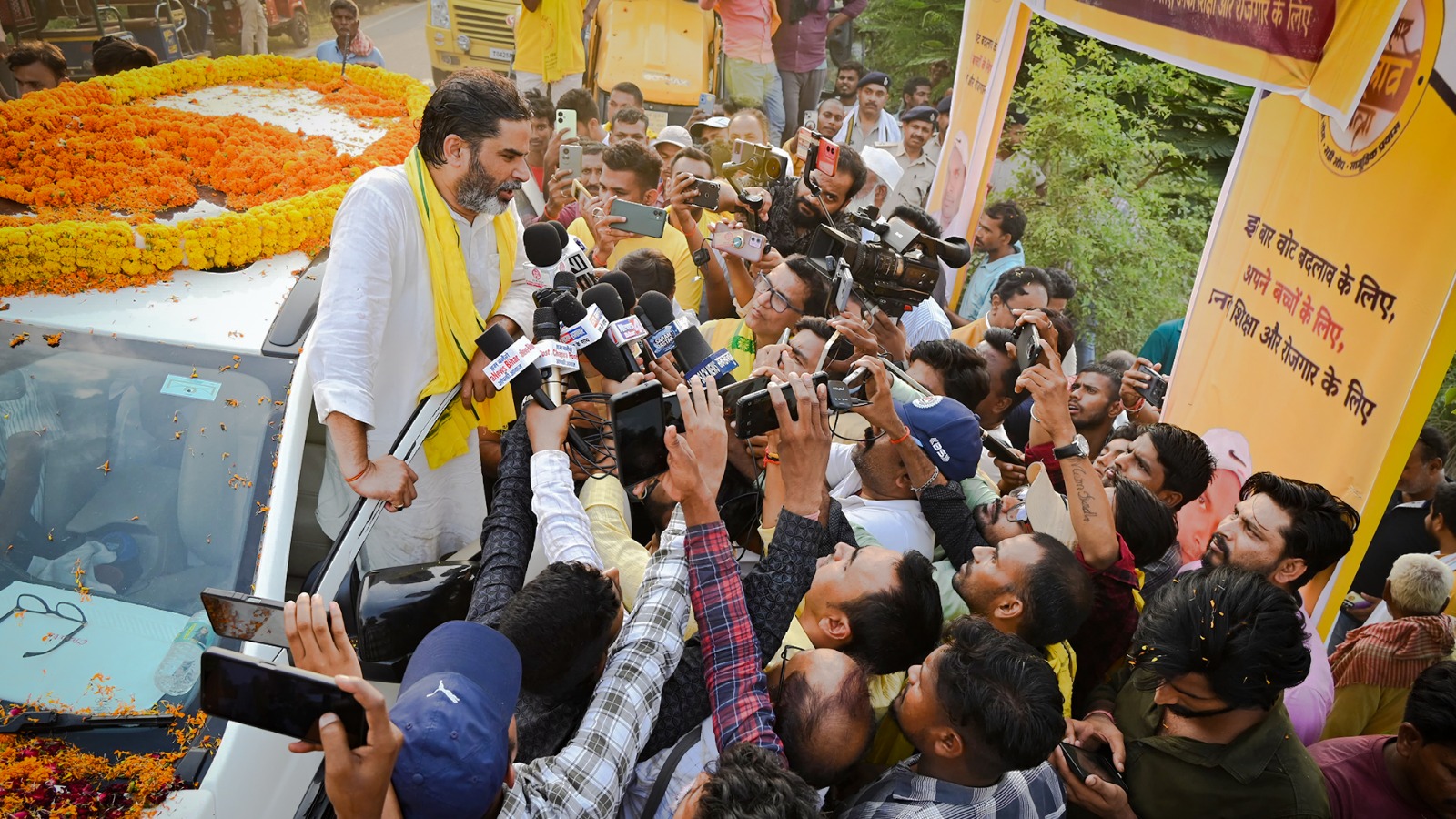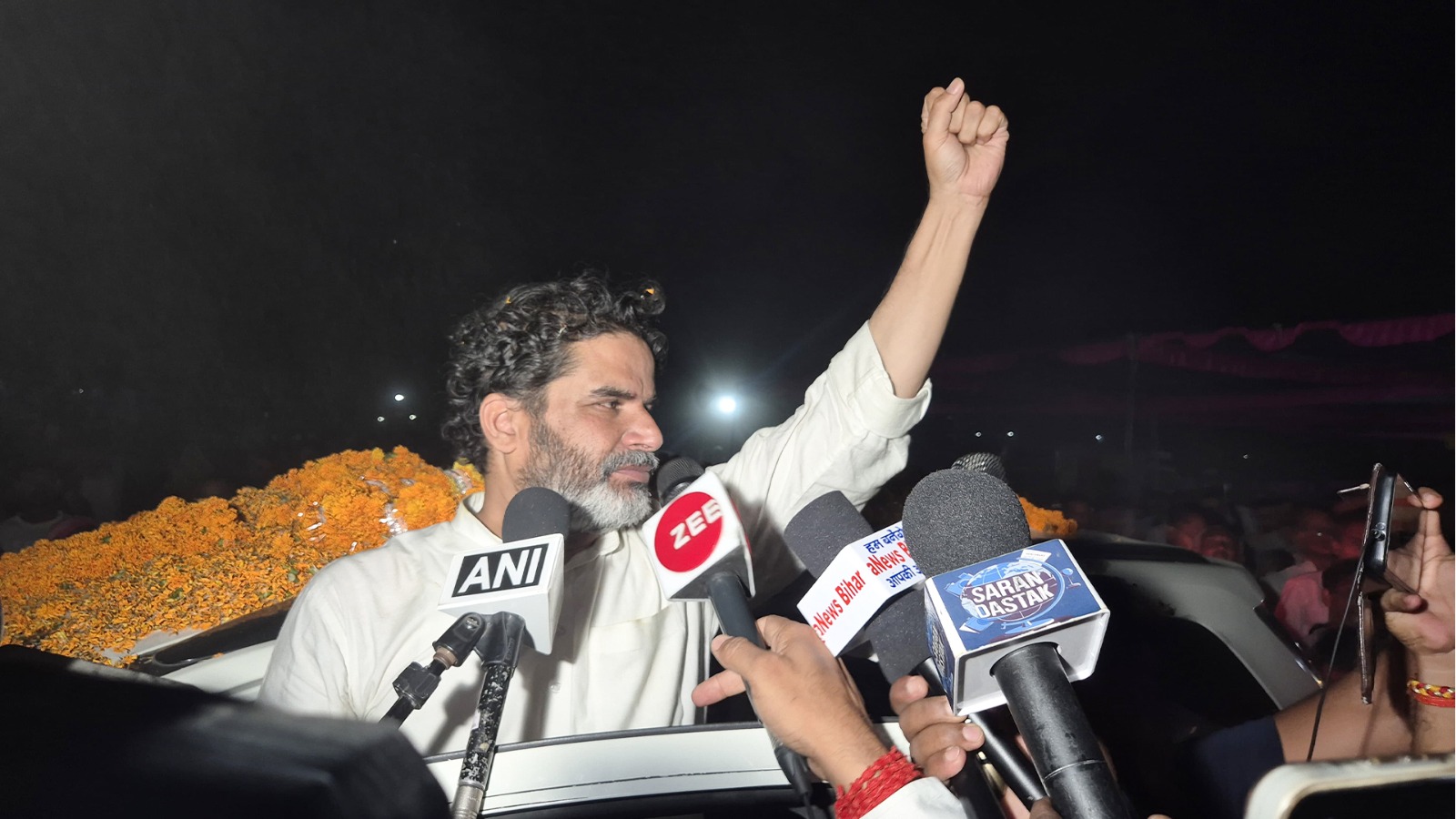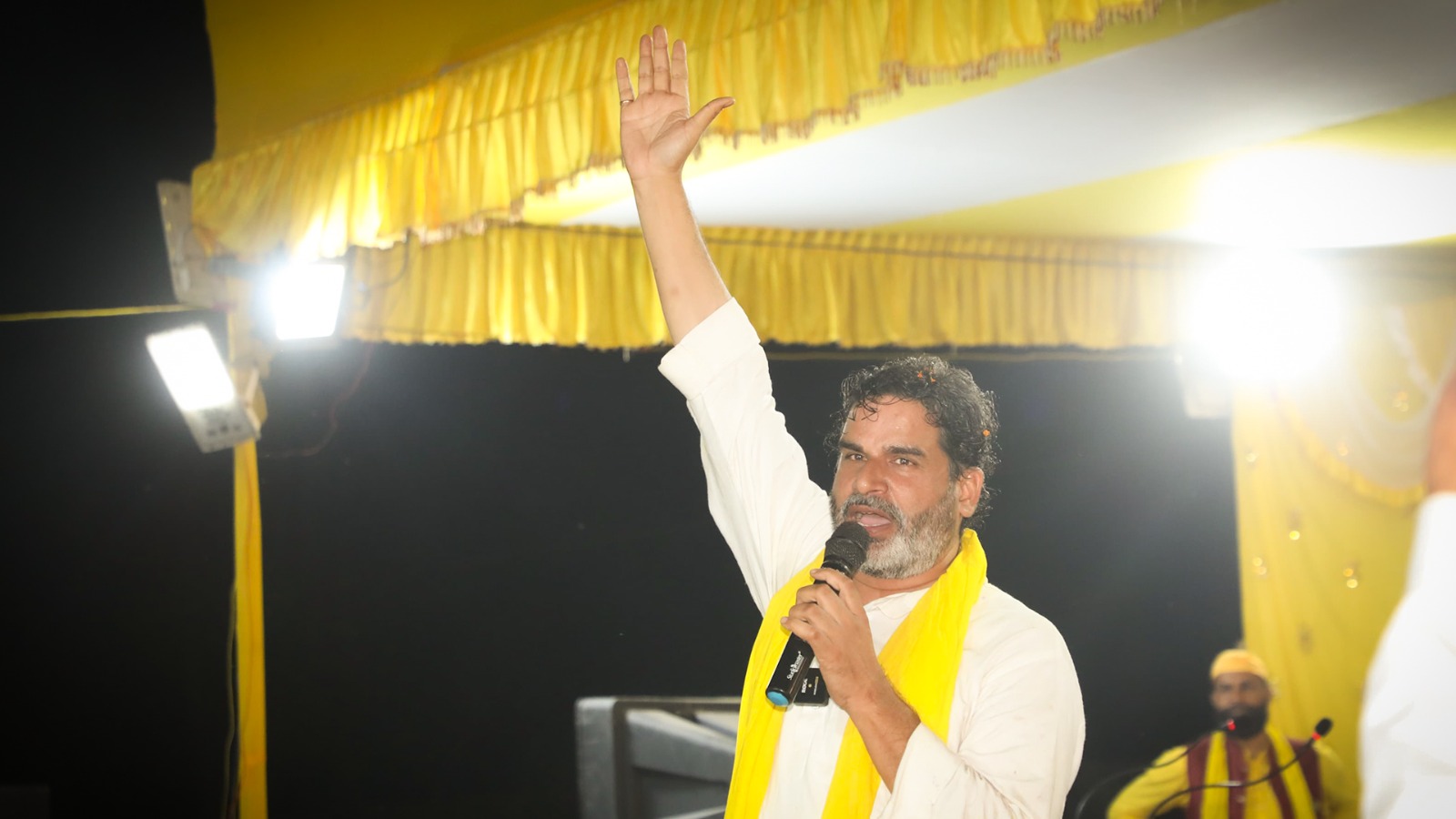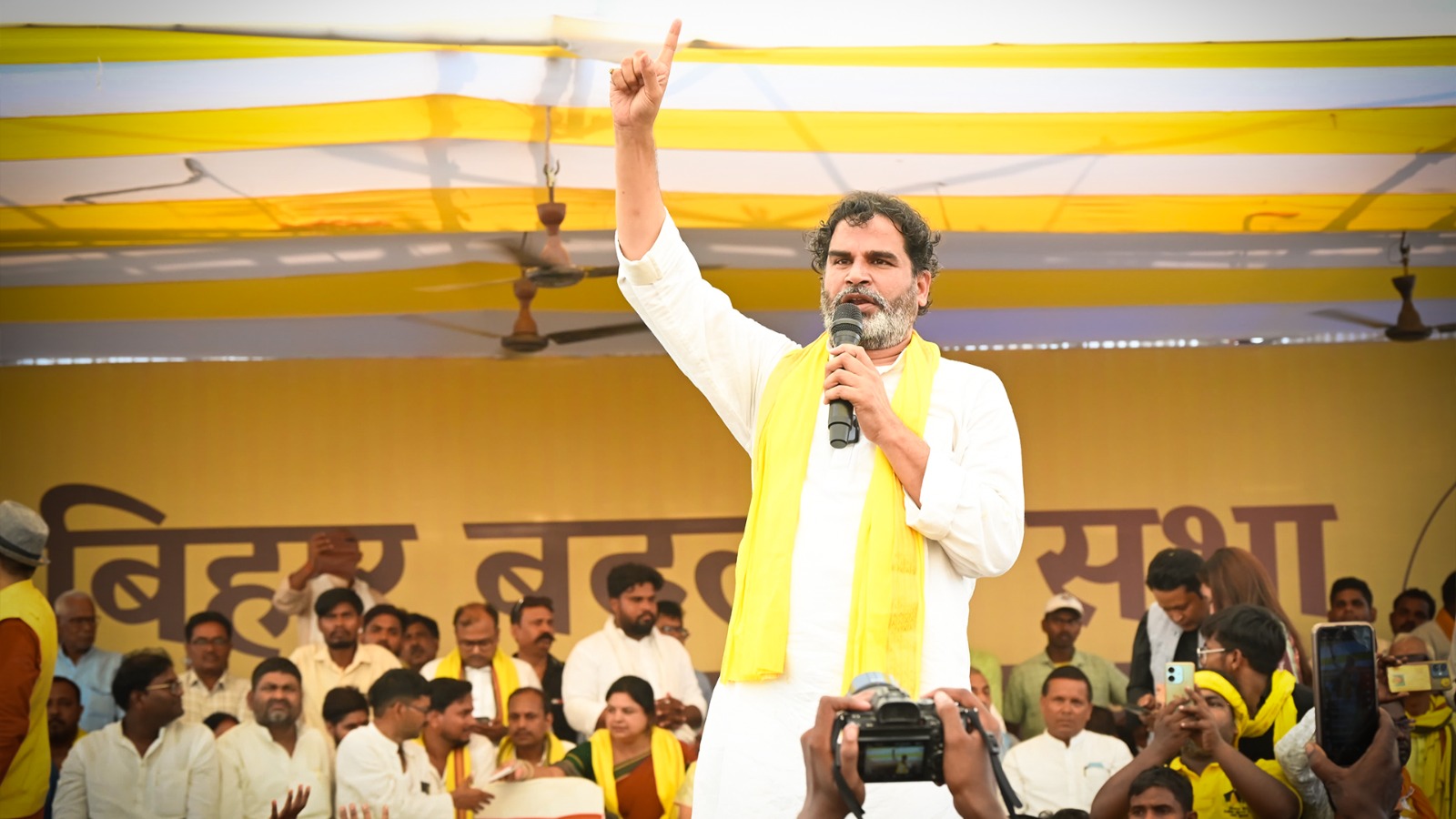
Biharis need to listen to Prashant Kishor and Jan Suraaj Party for their own benefit. It is more
than two years now since Prashant Kishor (PK) started his Jan Suraaj Yatra (JSY) on 2
October 2022. While forming his Jan Suraaj Party (JSP) on 2 October 2024 and making it the
fulcrum of his continuing JSY, he is the only leader as of now who can rightfully claim to
have extensively travelled through every nook and cranny of the Bihar countryside. All other
yatras – be it the official Pragati Yatra of the Chief Minister Nitish Kumar or the variously
named yatras of the opposition leaders like Tejashwi Yadav and Kanhaiya Kumar – pale in
significance when compared to PK’s enviable criss-crossing of the state. One can very well
see and palpably feel PK’s incessant efforts to connect with people through numerous
meetings and public dialogues.
Whatever reservations we may have had initially about PK’s
intent and politics, his sheer uninterrupted presence, and the tireless travel through the dusty
lanes and bylanes of Bihar’s villages reveals his long-term commitment to Bihar, and a life-
time investment in its well-being. It is no mean feat for someone like him to take recourse to
the old established mode of political communication of a yatra amidst the extant cacophony
of social media wars of instant triumph and/or infamy. He has had options. Indeed, he has a
kind of proven expertise to instrumentally use modern Information and Communication
Technology (ICT) for political one-upmanship and virtual supremacy. Yet, he chose to
eschew all that for a change, and is literally sweating it out there with his friends and
comrades. He deserves kudos for that, and not brickbats.

If one cares to listen to him, he makes plenty of sense. It would be unfortunate to dismiss him
outright as a parachuted outsider, a mere pollster, an urban fake, or an over-ambitious
privileged upper caste lad used to air-conditioned Swadesh-type of luxury van – something
that Bihari politicians of all hues have been wont to do.
First of all, he has really taken the
sheen out of the well-established narratives around democratisation of politics or the lower-
caste political assertion, the so-called second democratic upsurge, propounded by respectable
political theorists and social science scholars. By talking about only some thousand odd
political families of Bihar usurping power and pelf since Independence, he is bringing to the
fore the making of political dynasties across the political spectrum, and at multiple levels of
political hierarchy. Put differently, he is emphatic in his claim that the much talked about
lower caste political assertion has largely led to substantive accumulation of political power
by a handful of families notwithstanding the rhetorical brouhaha around the emergence of the
power of the subaltern in Bihar – a Yadav here, a Manjhi there and a Chaudhary somewhere
else. Inheritance of political office in Bihar is as rampant as elsewhere in India.
No coating of
the politics of social justice can hide this inter-generational grip over political office. Caste
groups routinely get invoked, and in the name of their representation, the same set of families
get ensconced in political office. PK has justifiably flagged this narrow social base
(tied to close-knit family, caste and kinship networks) of political power in a state identified
with caste-based democratic mobilisations. For the students of Indian politics and democracy,
there is much to learn from him and his public interventions.

Second, without our realising it, PK is recasting the developmental discourse of the state.
Generations of Biharis have been obsessed with the imagery of a factory/industry as the
ultimate guarantor of development. That explains their sense of loss once Jharkhand was
carved out of Bihar in the year 2000, as most industries became part of the new state.
This
explains their constant clamour for the revival of sundry industries in Bihar. For decades, the
Biharis have been saying the same thing again and again: revive the defunct paper mill in
Haya Ghat, do the same with sugar mills in places like Riga and Sakri. It is no one’s case that
these closed mills should not be resuscitated. But they are unlikely to make Bihar an
industrial power house overnight.
That is where PK is firmly attempting to take the
development debate beyond the mere symbolism of a Dalmia Nagar or a Dehri-on-Sone. He
is interrogating the very political economy of the Indian state which leads to concentration of
capital in western and southern parts of the country and the abundance of mostly unskilled
labour in states like Bihar. Decades of poor investment in health and education have rendered
Bihar a provider of the reserve army of cheap migrant labour fuelling economic growth
elsewhere. He is foregrounding the inherently unjust and uneven economic geographies of
the North and the South, the East and the West. He is front-lining the continued neglect of
human development policies by the state-government of Bihar.
He is talking of deeply
ingrained structural imbalances in the country and in the state. The perpetuating caste-class
divide in Bihar ensures that Biharis end up becoming both IAS officers and IT professionals
on the one hand and security guards and cart-wallahs on the other in cities like Bengaluru and
Hyderabad. It is not difficult to figure out which Biharis inhabit the swanky modern offices
and who join the burgeoning Indian urban under-belly at mere subsistence levels.

Third, PK has also been dismissed as a mere data cruncher. Self-styled seasoned politicians
and commentators have been vehemently dismissive of PK’s data-laden public interventions.
For the former, politics is a different ball game altogether which no tools of data analysis
howsoever sophisticated can grasp.
Yet, it would be our sheer short-sightedness to reduce
PK’s politics to mere data-crunching exercises. Yes, his talks are suffused with Bihar
occupying the lowest rungs on all the possible indicators of economic and social
development. Such recourse to hard data and references to a plethora of reports, mostly
official, makes eminent sense. In a state where people get ecstatic with the introduction of a
new Namo Bharat train, or the mere announcement of a Greenfield Expressway, imparting a
sense of realism is the need of the hour. Putting Bihar’s development in a comparative
framework, in relation to the national indicators and to the indicators of other relatively
developed states, is necessary to outline a futuristic vision for growth and development.
Crucially though, PK’s yatra has made him see the rampant misery and poverty first hand,
making him assert that poverty in Bihar is more brazen and unsettling than any data primer
may suggest. The much-hyped symbolism of a new airport, a new Amrit Bharat station, and a
new Makhana Board, is not even a proverbial drop in the ocean of deprivation that is so
characteristic of the state of Bihar.

Finally, PK’s recent and open targeting of the state bureaucracy for its inertia and corruption
is a deeply political act. The current regime has witnessed the gradual marginalisation of
political representatives at all levels of decision making and executive control. Not merely
limited to Bihar, this phenomenon blunts the very edge of democratisation and retains state-
quo despite larger political churning in Indian society.
By harping on political accountability
of bureaucracy, and by critiquing the existing patron-client relations, PK does wish to add
impetus to the powerful forces of democratisation and set up a new agenda of governance.
Encouragingly enough, PK’s is no longer an agenda of depoliticised governance. He is
acutely aware that any agenda of governance is deeply implicated in the politics of the day.
An MBA case study is no solution to an intractable political problem based on the endless
play of multifarious interest constellations. Moreover, an agenda of governance necessitates
well-mobilised social carriers by way of rank and file of a political party. To create and
sustain such a mechanism one does need a long-term political agenda.
In a state like Bihar,
the land question does offer such a ready-made agenda for PK. So does the quality of public
education and health. PK is well-advised to sharpen his political pitch around farms, school
and hospitals to offer a political antidote to the polarising discourses of religious
majoritarianism and caste chauvinism. These are the big political issues of the day having the
potential to recalibrate structural imbalances of the Bihari society through public policy
interventions. In these days of ideological promiscuity, it is unfair to expect of PK a well-knit
ideology of the older type. As long as he remains conscious of the embeddedness of
governance in politics, he deserves all our ears.

Indeed, there are challenges galore. Jan Suraaj Party has to ensure that it does not turn out to
be an easy bandwagon to climb for the political left-overs and hangers-on waiting in the
wings. Equally, it has to contain the usual temptation of populating the party, especially its
higher echelons, with middle class professionals of various ilk. Middle class Indians have
unqualified adulation for a bureaucrat or a technocrat, whether retired or serving. After all,
JSP should not end up being the future AAP of Bihar. PK has to constantly keep reminding
himself that JSP is a political party, and not a consultancy firm howsoever lean, sleek and
efficient.
*Manish Thakur and Nabanipa Bhattacharjee are faculty members at IIM Calcutta and
University of Delhi respectively.
